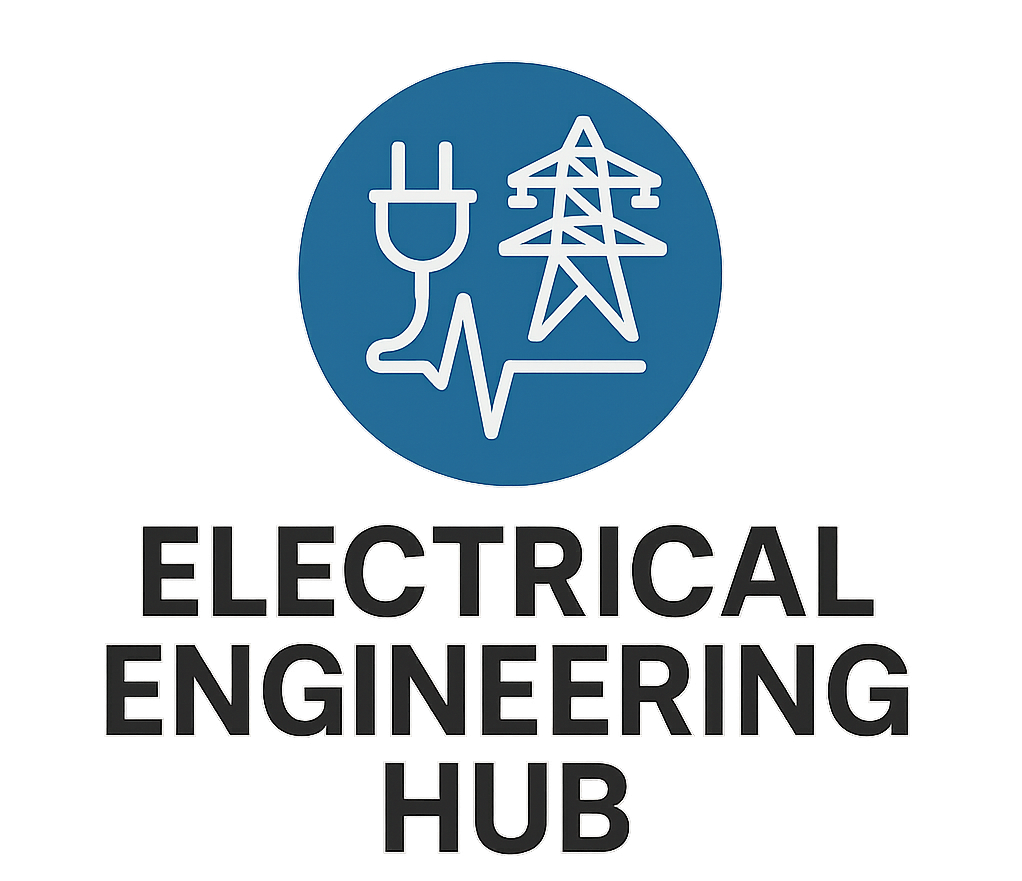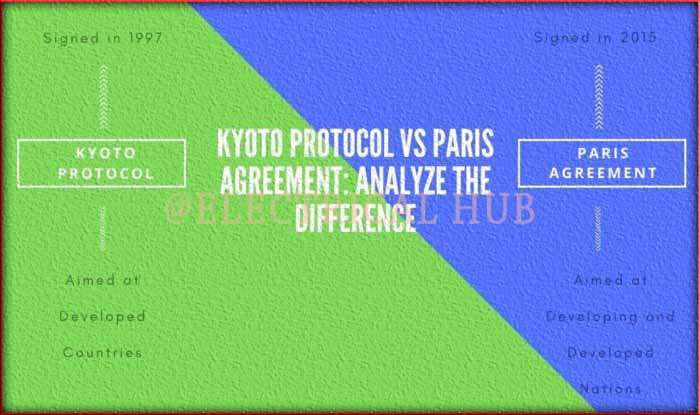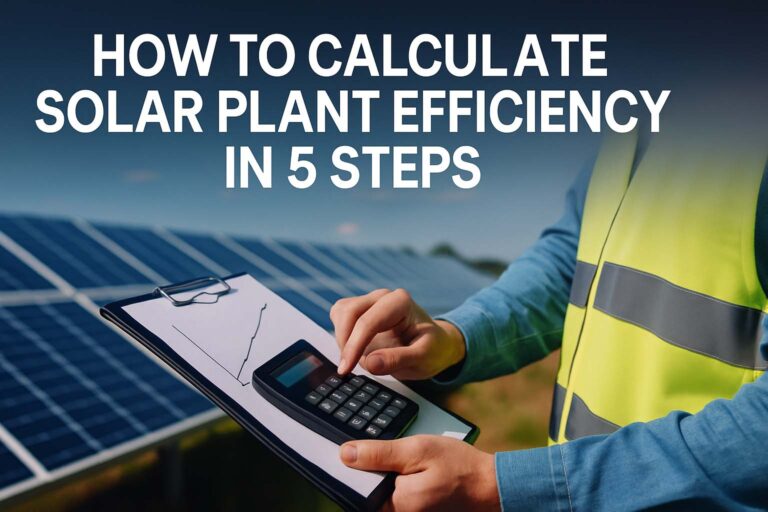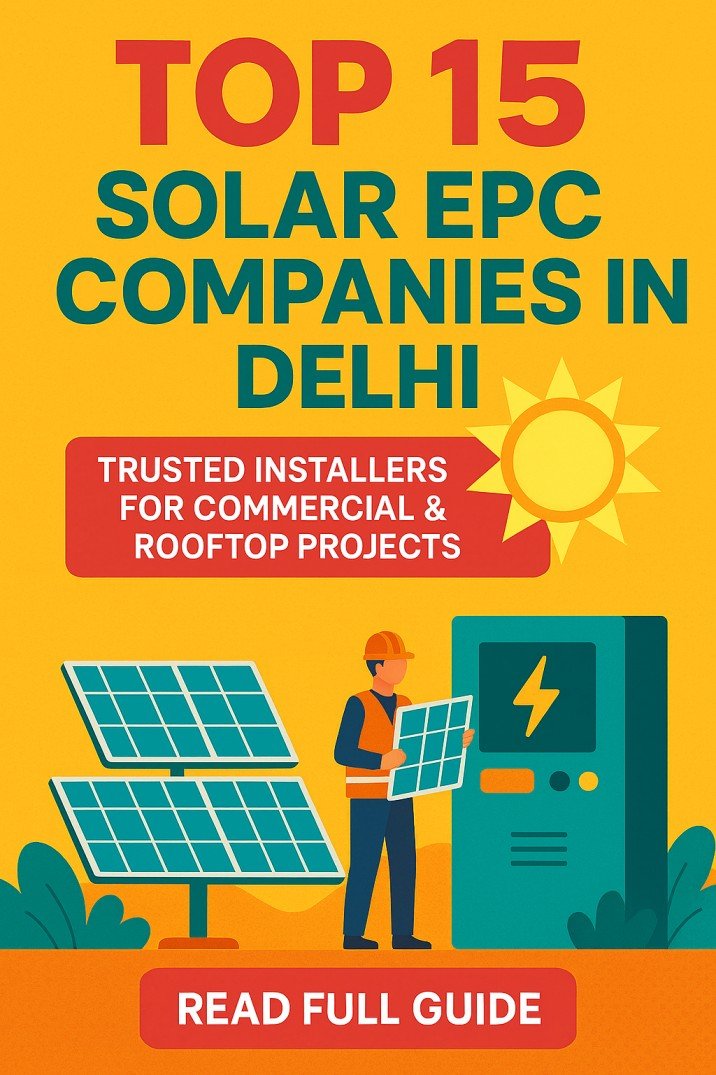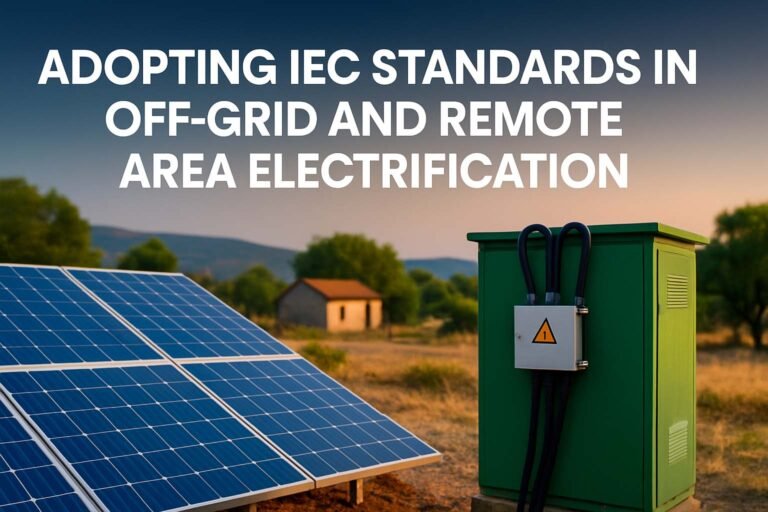Comparison of Grid-Tied vs Off-Grid Solar Energy Systems: What You Must Know in 2025
As solar energy continues to rise in popularity, more homeowners and businesses face the choice between Grid-Tied vs Off-Grid Solar systems. This decision affects everything—from cost and reliability to energy independence and sustainability. Both systems have unique features, advantages, and limitations. Choosing the right one depends on your location, energy needs, budget, and long-term goals.
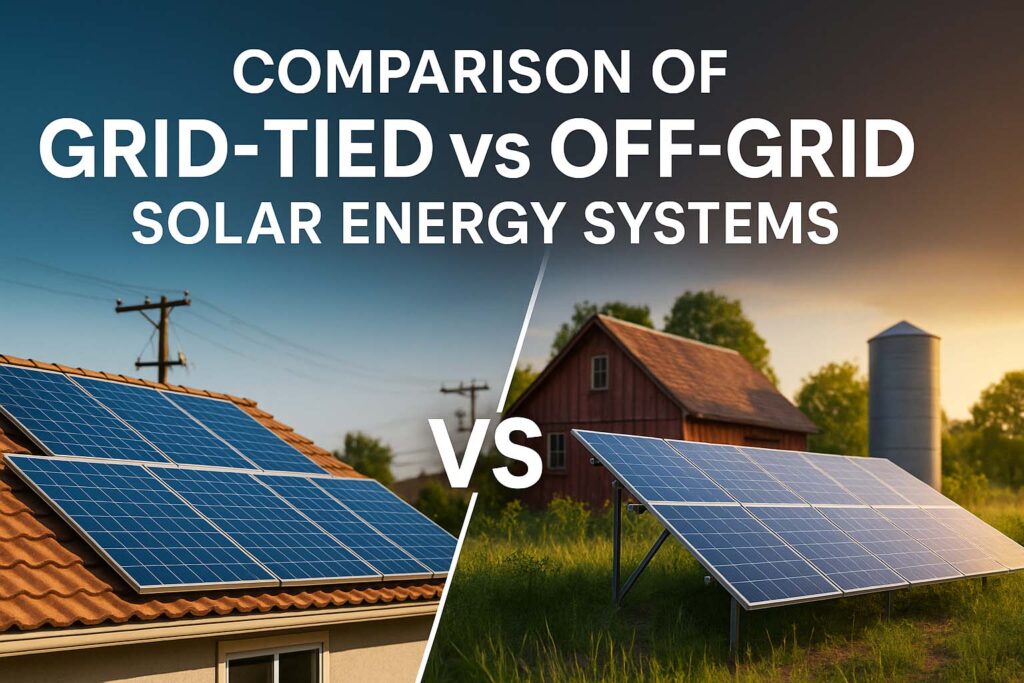
In this in-depth article, we’ll compare Grid-Tied vs Off-Grid Solar systems, highlight key differences, and offer expert insights to help you make an informed choice. Whether you’re living in a city with a reliable grid or planning to power a remote cabin, this guide will give you clarity.
Let’s explore both systems and how they differ technically, financially, and functionally.
What Is a Grid-Tied Solar System?
A Grid-Tied Solar System, also called a grid-connected system, is directly linked to the local utility grid. It generates power from solar panels and uses an inverter to convert DC electricity into AC, which can power your appliances.
If your solar system produces more electricity than you need, the excess power is sent back to the grid. This is where net metering comes into play—you get credits for the extra energy, which helps reduce your electricity bills.
These systems are ideal for homes and businesses in urban or semi-urban areas with access to a stable power grid.
What Is an Off-Grid Solar System?
An Off-Grid Solar System, on the other hand, operates completely independently of the utility grid. It includes batteries that store energy for use during the night or cloudy days.
Since there’s no connection to the grid, the system must be carefully sized to meet all your energy needs. This includes backup for days when solar generation is low.
Off-grid systems are essential in remote areas where grid access is unreliable or unavailable. They offer full energy independence but require larger initial investment and careful planning.
Grid-Tied vs Off-Grid Solar: Core Technical Comparison
Here’s a side-by-side comparison of the two systems:
| Feature | Grid-Tied Solar | Off-Grid Solar |
|---|---|---|
| Connection to Grid | Yes | No |
| Battery Storage | Optional | Required |
| Cost | Lower Initial Cost | Higher Initial Cost |
| Reliability | Depends on Grid | Fully Self-Reliant |
| Net Metering Benefit | Yes | No |
| Backup During Outages | No (unless hybrid) | Yes |
| System Complexity | Simple | More Complex |
| Energy Independence | Partial | Complete |
| Ideal Location | Urban, Suburban | Remote, Off-Grid Areas |
System Components: Grid-Tied vs Off-Grid Solar Design
Grid-Tied Solar System Components
- Solar Panels: Capture sunlight and generate DC electricity.
- Inverter: Converts DC to AC for household use.
- Net Meter: Tracks power sent to and drawn from the grid.
- Grid Connection: Imports and exports power as needed.
Off-Grid Solar System Components
- Solar Panels: Same as grid-tied.
- Charge Controller: Manages battery charging to avoid overcharging.
- Battery Bank: Stores excess power for night or cloudy weather.
- Inverter: Converts stored DC to AC.
- Backup Generator (Optional): Acts as a fail-safe during prolonged bad weather.
Performance: Day-to-Day Use in Real Life
In day-to-day life, grid-tied systems are generally easier to maintain. You generate power during the day and draw from the grid at night. If your local utility offers net metering, you’ll see significant savings on your electricity bills.
Off-grid systems require more attention. You must monitor your battery levels, especially in winter or monsoon seasons. If your battery runs out and the sun isn’t shining, your backup generator (if you have one) kicks in.
People living in areas like rural Balochistan or mountainous regions in northern Pakistan find off-grid systems necessary. Those living in cities like Lahore or Karachi benefit more from grid-tied solutions with net metering support.
Cost Comparison: Upfront and Long-Term
The cost difference between Grid-Tied vs Off-Grid Solar is often the deciding factor.
Grid-Tied Systems:
- Lower initial investment
- Fewer components (no batteries)
- Eligible for net metering
- Maintenance is minimal
- Dependence on the grid means lower autonomy
Off-Grid Systems:
- High initial cost due to batteries and backup systems
- No electricity bills ever again
- Independence from rising grid electricity rates
- Battery replacement every 5–10 years
- Generator fuel cost (if needed)
Here’s a rough breakdown for a 5kW system:
| Cost Element | Grid-Tied (USD) | Off-Grid (USD) |
|---|---|---|
| Solar Panels | 3,000 | 3,000 |
| Inverter | 1,000 | 1,000 |
| Batteries | 0 | 3,500 |
| Charge Controller | 0 | 500 |
| Wiring & Mounting | 700 | 900 |
| Backup Generator | 0 | 1,500 (Optional) |
| Total Cost | ~$4,700 | ~$9,400 |
Note: Prices are indicative and vary by brand and country.
Efficiency and Energy Losses
Grid-tied systems tend to be more efficient overall. Since they don’t rely on battery storage, there’s minimal energy loss. Off-grid systems lose 10–15% of energy during storage and conversion.
Moreover, battery life is limited. Over time, their capacity degrades, affecting total system performance. Lithium-ion batteries perform better but cost more. Lead-acid batteries are cheaper but bulkier and less efficient.
Maintenance Requirements
Grid-tied solar systems require basic panel cleaning and an annual inverter check. With no batteries, there’s less to go wrong.
Off-grid systems, however, need more attention. Batteries require regular monitoring, equalization (for lead-acid), and ventilation. You’ll also need to keep track of charge cycles to extend battery life.
Use Cases and Suitability
When to Choose Grid-Tied Solar:
- You live in a city or town with a reliable electricity grid
- You want to reduce your electricity bill through net metering
- You’re not concerned with power outages
- You prefer a low-maintenance system
When to Choose Off-Grid Solar:
- You live in a rural or remote location
- Grid access is expensive or unreliable
- You want full energy independence
- You are ready to invest more initially for long-term savings
Environmental Impact
Both systems are eco-friendly compared to fossil fuels. But off-grid systems often require diesel generators during peak loads or cloudy days, which adds emissions. Grid-tied systems rely on the grid during low solar generation, and if your local grid uses coal, that adds indirect emissions.
To stay green, combining a grid-tied solar system with solar battery storage and smart energy monitoring is a growing trend. This hybrid approach blends reliability with sustainability.
Long-Term Considerations
In the long run, the right system depends on your goals. If your priority is saving money with minimal hassle, grid-tied solar is the way to go. If you value energy security and independence, especially for a farmhouse or off-grid homestead, off-grid systems offer long-term peace of mind.
Battery technology is also evolving. With the rise of lithium-ion and solid-state batteries, off-grid systems will become more efficient and less bulky over the next few years.
Final Thoughts: Which Solar System Should You Choose?
When comparing Grid-Tied vs Off-Grid Solar, there’s no one-size-fits-all answer. Your decision should reflect your location, energy goals, lifestyle, and budget. While grid-tied systems offer convenience and affordability, off-grid systems provide autonomy and resilience.
If you’re still unsure, consult with a solar energy expert to assess your site and usage patterns. You might even consider a hybrid solar system—offering the best of both worlds with batteries and grid access.
Want to explore more solar options for your property? Learn how to size your solar system using our Solar Load Calculator or compare Commercial EV Charger Installation Cost in the UK if you plan to integrate solar EV charging in the future.
Follow Us on Social:
Subscribe our Newsletter on Electrical Insights for latest updates from Electrical Engineering Hub
#GridTiedSolar, #OffGridSolar, #SolarEnergy2025, #SolarSystemComparison, #RenewableEnergy, #SustainableLiving, #EnergyIndependence, #GreenEnergy, #SolarPowerSystems, #CleanEnergyFuture, #SolarInstallation, #GoSolar, #SolarTech, #EcoFriendlyPower, #EnergySolutions
